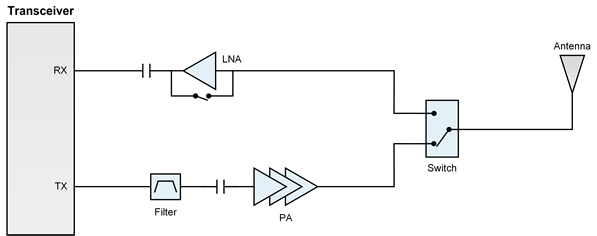Driving the Connected Car Reality
February 9, 2016
The connected car market is (slowly) beginning to take shape. Connecting a car to other cars and its surrounding infrastructure via the Internet and Wi-Fi will eventually enable a host of driving efficiencies benefiting car drivers and manufacturers.
Car Connectivity Emerges
The connected car fits nicely into the developing ecosystem around the Internet of Things, or IoT. The connected car will be a component of a smart city, driven by a multifaceted connected infrastructure and mobile devices. Although typically we think of the connected car as vehicle to vehicle (V2V) — with lane obstruction or automatic braking alerts, for instance — the future is V2X, or vehicle to infrastructure. Imagine traffic lights automatically changing based on traffic patterns or responding to commute demands, or your car having the ability to search several city blocks for a parking spot so you can efficiently complete your errands — all this enabled by the IoT.

802.11p is an approved amendment of the Wi-Fi 802.11 standard to add wireless access in vehicle environments (WAVE). This vehicle communication system is fast becoming the standard for intelligent transportation system applications. New mobile infrastructure technologies — such as Wi-Fi Certified Passpoint, which allows seamless, instantaneous connection between public hotspots at roadway speeds — are further propelling the 802.11p standard into the IoT environment.
RF Design Challenges
RF design challenges in this market include responding to frequency band coexistence; high temperatures up to 105°C; and current consumption:
- The 802.11p Wi-Fi band must be able to operate near other Wi-Fi bands, cellular bands and Bluetooth bands. Filter technologies such as Qorvo's LowDrift™ and NoDrift™ filters that address coexistence scenarios are imperative in reducing band coexistence challenges.
- Reducing filter and switch insertion loss helps the RF link budget and reduces PA strain.
- High switch and filter isolation also improves leakage and de-sense issues.
- Optimizing GaAs technologies to increase linearity and efficiency reduces PA current consumption. Qorvo's new GaAs PA fabrication process aids in the optimization of linearity and efficiency to help designers reduce the system’s current consumption.
Qorvo's Development Activities for 802.11p
One new Qorvo automotive product being developed is our latest power amplifier, QPA5525Q. This power amplifier is the most linear power amplifier on the market and is optimized for chipset 802.11p applications. This PA contains an internally matched 3-stage PA, compensated DC biasing circuit and output power detector. Qorvo is also developing a BAW filter and investigating other discrete and integrated products to support 802.11p.

Qorvo 802.11p Block Diagram
Qorvo's automotive products are tested in accordance with Automotive Electronics Council (AEC) standards, and our achievement and maintenance of our ISO/TS 16949 automotive system certification is evidence of our continued commitment to our customers. Look for more information on this PA and other Qorvo 802.11p solutions for the connected car and IoT on Qorvo.com/applications/automotive.
Have another topic that you would like Qorvo experts to cover? Email your suggestions to the Qorvo Blog team and it could be featured in an upcoming post. Please include your contact information in the body of the email.
